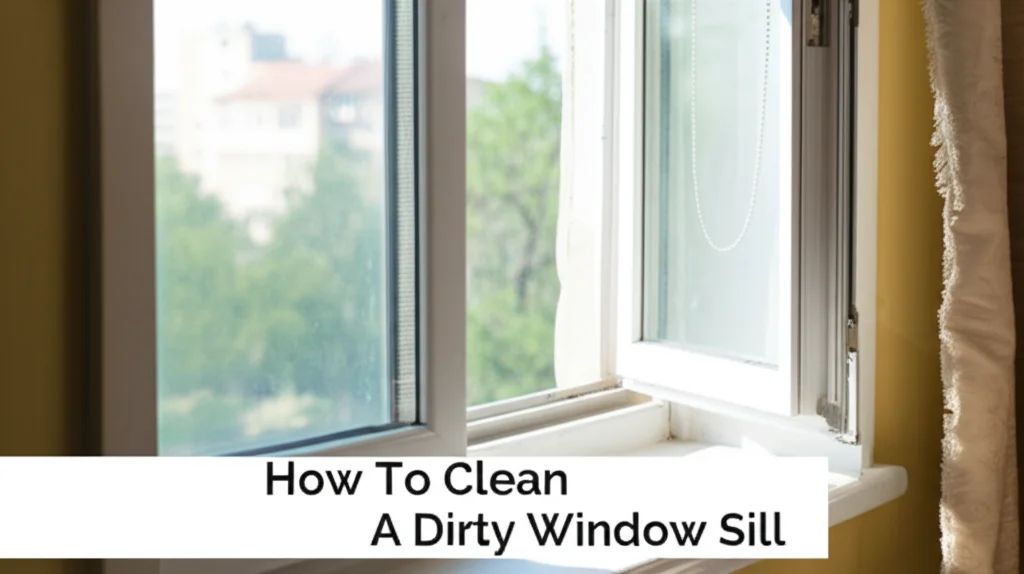· Home Cleaning · 7 min read
How To Clean Between Storm Windows

Sparkling Clear: How To Clean Between Storm Windows
Have you noticed a buildup of dirt, dust, and grime clouding the space between your storm windows? It’s a common problem, especially after harsh weather. Cleaning between storm windows isn’t just about aesthetics; it improves visibility and can even extend the life of your windows. This article will guide you through the process, providing simple, effective methods to achieve crystal-clear views. We’ll cover everything from the tools you’ll need to step-by-step instructions, and even preventative measures to keep your windows cleaner for longer.
Cleaning between storm windows can seem daunting, but it’s a manageable task with the right approach. It’s important to address this regularly to prevent buildup and make future cleaning easier. This guide will break down the process into easy-to-follow steps, ensuring you can enjoy bright, clear views all year round. Let’s get started!
Quick Answer: To clean between storm windows, use a vacuum with a brush attachment to remove loose debris, then a solution of warm water and mild dish soap applied with a microfiber cloth or sponge. Rinse with clean water and dry thoroughly to prevent streaks.
Takeaway:
- Regular cleaning prevents buildup.
- Use gentle cleaning solutions to avoid damage.
- Thorough drying is key to streak-free results.
Why Cleaning Between Storm Windows Matters
Storm windows are designed to provide an extra layer of insulation and protection. However, the space between the panes can trap dirt, pollen, insects, and moisture. This buildup isn’t just unsightly; it can actually reduce the energy efficiency of your windows. A dirty space between the panes doesn’t insulate as well, leading to higher heating and cooling costs.
Furthermore, trapped moisture can lead to condensation, which can promote mold and mildew growth. Mold can damage the window frames and potentially affect indoor air quality. Regularly cleaning between your storm windows helps prevent these issues, preserving the integrity of your windows and maintaining a healthy home environment. It’s a small task that yields significant benefits.
Gathering Your Cleaning Supplies
Before you begin, having the right tools on hand will make the job much easier. You don’t need anything fancy – most of these items you likely already have at home. Here’s a checklist of what you’ll need:
- Vacuum with Brush Attachment: This is essential for removing loose debris like dust, dirt, and cobwebs.
- Microfiber Cloths: These are ideal for cleaning glass surfaces as they don’t leave lint behind.
- Sponge: A soft sponge can be used for applying cleaning solution.
- Bucket: For mixing your cleaning solution.
- Mild Dish Soap: A few drops of dish soap in warm water create an effective cleaning solution. Avoid abrasive cleaners.
- Spray Bottle (Optional): For easier application of the cleaning solution.
- Extension Pole (Optional): Helpful for reaching high windows.
- Old Toothbrush: For scrubbing stubborn dirt in corners.
Having everything prepared beforehand will streamline the cleaning process and ensure you have everything you need within reach.
Step-by-Step Guide to Cleaning Storm Windows
Now that you have your supplies, let’s get to the cleaning! Follow these steps for sparkling clean storm windows:
- Vacuum First: Use the brush attachment on your vacuum to remove loose dirt, dust, and debris from the space between the windows. Pay attention to the corners and edges where debris tends to accumulate.
- Prepare Cleaning Solution: In your bucket, mix a few drops of mild dish soap with warm water. Avoid using harsh chemicals or abrasive cleaners, as these can damage the window surfaces.
- Apply Cleaning Solution: Dip your microfiber cloth or sponge into the cleaning solution and gently wipe down the interior surfaces of both storm windows. If using a spray bottle, lightly mist the glass.
- Scrub Stubborn Areas: For any stubborn dirt or grime, use an old toothbrush to gently scrub the affected areas. Be careful not to apply too much pressure, as this could scratch the glass.
- Rinse Thoroughly: Use a clean microfiber cloth dampened with clean water to rinse away the soap solution. Repeat until all traces of soap are gone.
- Dry Completely: Use a dry microfiber cloth to thoroughly dry the windows. This will prevent streaks and water spots.
Dealing with Difficult Dirt and Grime
Sometimes, you’ll encounter dirt and grime that’s more stubborn than others. Here are a few tips for tackling those challenges:
- Sticky Residue: For sticky residue, like from insects or tree sap, try using a solution of warm water and vinegar. Let it sit for a few minutes before wiping clean.
- Hard Water Stains: Hard water stains can be removed with a solution of lemon juice and water. Apply, let sit, and then wipe clean.
- Mold and Mildew: If you find mold or mildew, use a solution of bleach and water (1 part bleach to 10 parts water). Always wear gloves and eye protection when working with bleach, and ensure adequate ventilation. After applying, rinse thoroughly and dry completely. You can find more information on mold removal at https://www.beacleaner.com/how-to-remove-mold-from-painted-walls/.
- Bird Droppings: Gently scrape off dried bird droppings with a plastic scraper before cleaning with your solution.
Remember to always test any cleaning solution in an inconspicuous area first to ensure it doesn’t damage the window surface.
Preventing Future Buildup
Cleaning is easier when you don’t have to deal with excessive buildup. Here are some preventative measures you can take:
- Regular Vacuuming: Vacuum the space between your storm windows every few months to remove loose debris.
- Exterior Cleaning: Regularly clean the exterior of your storm windows to prevent dirt from being blown into the space between the panes.
- Trim Nearby Vegetation: Trim any trees or shrubs that are close to your windows to reduce the amount of leaves, pollen, and debris that accumulate.
- Seal Cracks and Gaps: Seal any cracks or gaps around your windows to prevent drafts and keep dirt out.
- Consider Window Film: Applying a window film can help repel dirt and make cleaning easier.
When to Call a Professional
While most storm window cleaning can be done yourself, there are times when it’s best to call a professional. If your storm windows are particularly dirty or difficult to reach, or if you suspect there’s significant mold or mildew growth, a professional window cleaning service can provide a thorough and safe cleaning. They have the tools and expertise to handle even the most challenging cleaning jobs. If you’re dealing with flooring issues as well, you might want to check out https://www.beacleaner.com/how-to-clean-vinyl-plank-flooring/ for helpful tips.
Frequently Asked Questions
Q: How often should I clean between my storm windows? A: Ideally, you should clean between your storm windows at least twice a year – once in the spring and once in the fall. However, if you live in a particularly dusty or polluted area, you may need to clean them more frequently.
Q: Can I use Windex to clean my storm windows? A: While Windex can be used, it often leaves streaks. A solution of warm water and mild dish soap is generally more effective and less likely to cause streaking.
Q: What if my storm windows are sealed? A: If your storm windows are sealed, you shouldn’t attempt to open them to clean between the panes. In this case, focus on cleaning the exterior and interior surfaces of the windows.
Q: Is it safe to use a pressure washer on storm windows? A: No, using a pressure washer on storm windows is not recommended. The high pressure can damage the glass and seals.
Q: What’s the best way to dry storm windows to avoid streaks? A: Using a clean, dry microfiber cloth is the best way to dry storm windows and avoid streaks. Ensure the cloth is lint-free and wipe in a circular motion.
Enjoying Clear Views
Cleaning between storm windows is a simple yet effective way to improve the appearance and energy efficiency of your home. By following these steps and implementing preventative measures, you can enjoy sparkling clear views all year round. Don’t let dirt and grime cloud your outlook – take the time to clean your storm windows and reap the benefits of bright, clear, and energy-efficient windows. Remember, a little maintenance goes a long way! If you’re looking for more cleaning tips, consider checking out https://www.beacleaner.com/how-to-clean-hardwood-floors-with-vinegar/ for a comprehensive guide.




